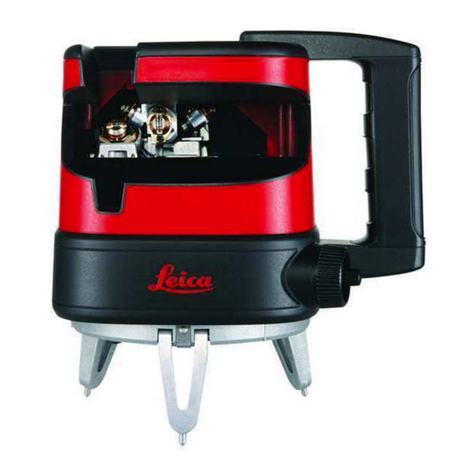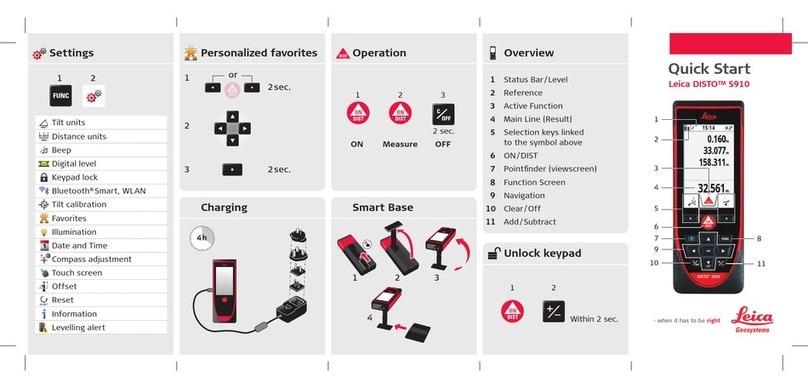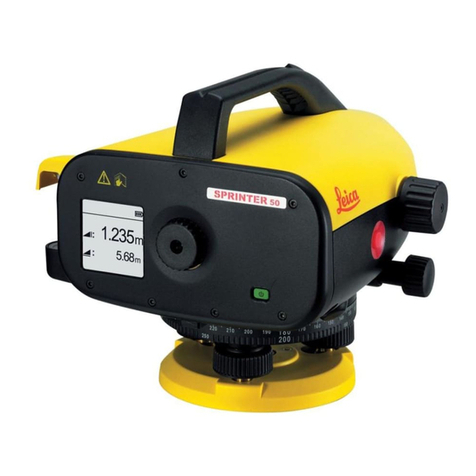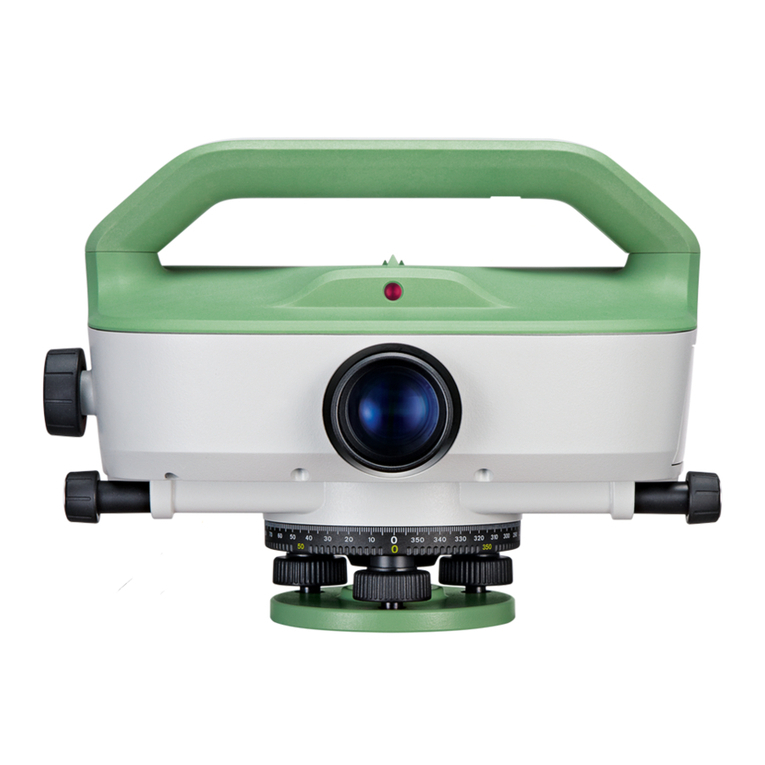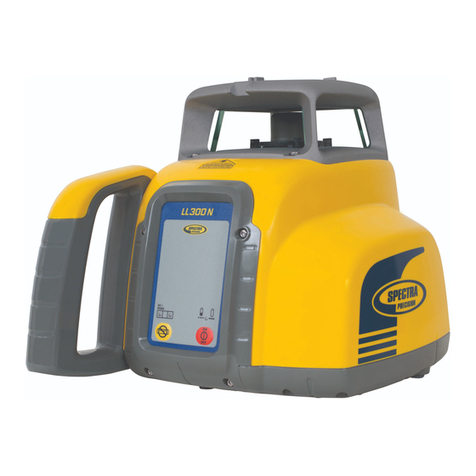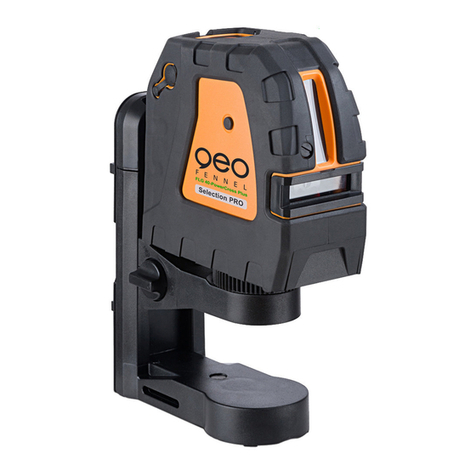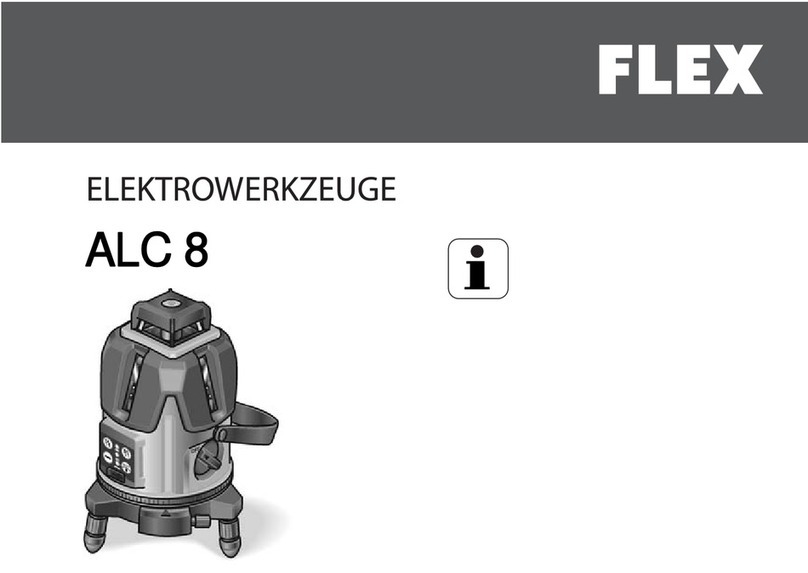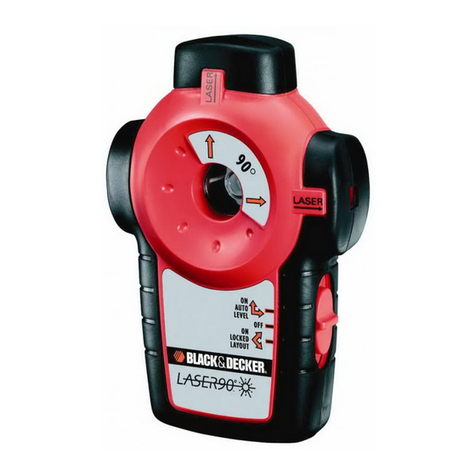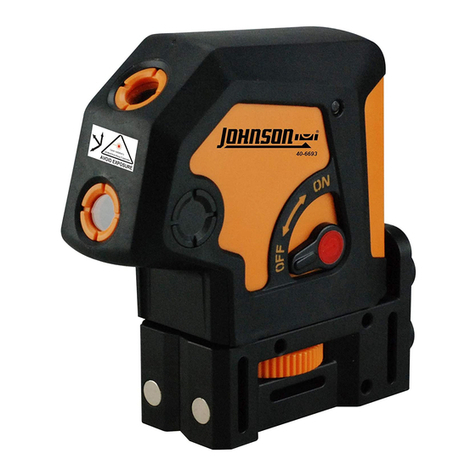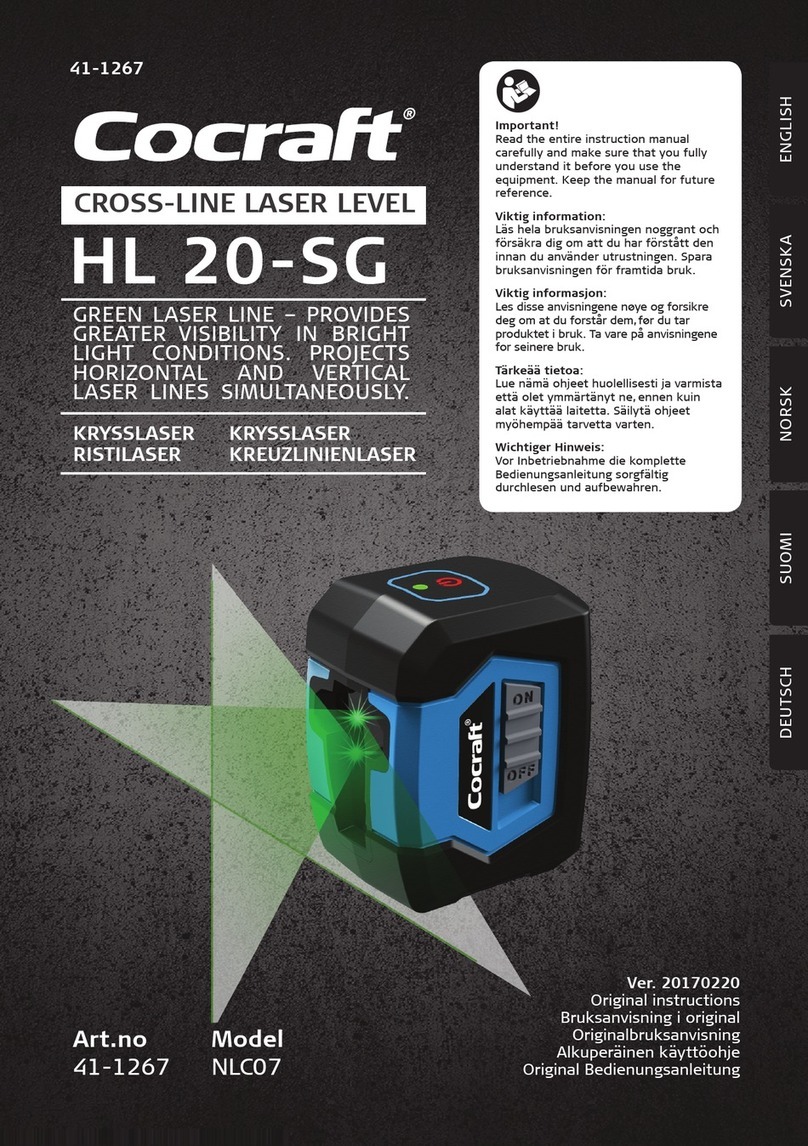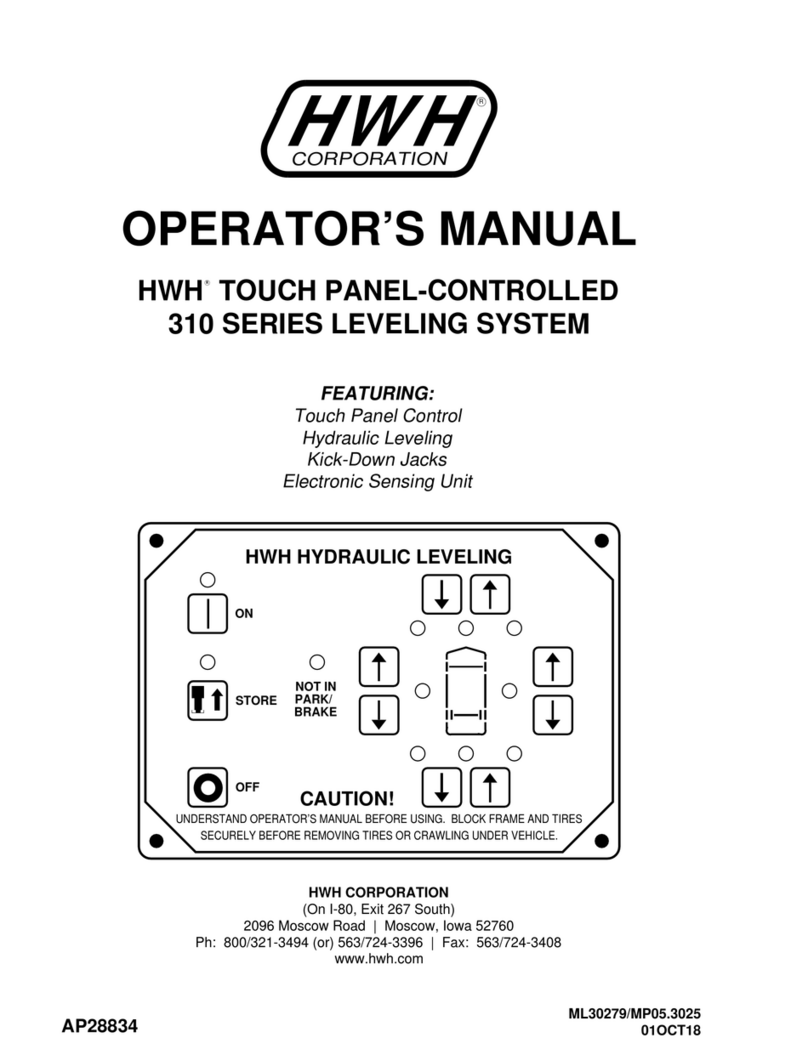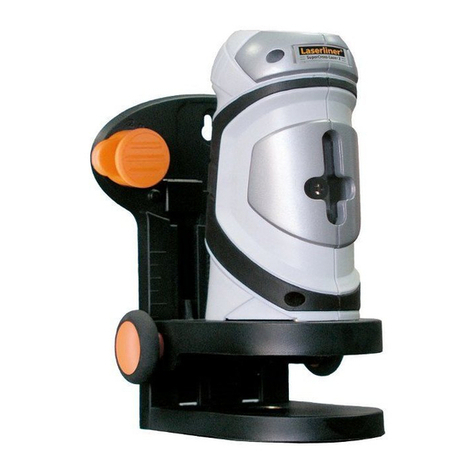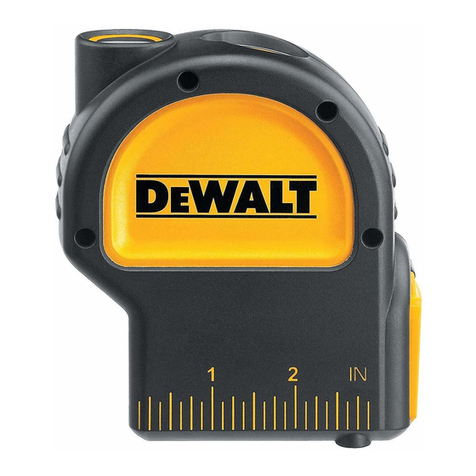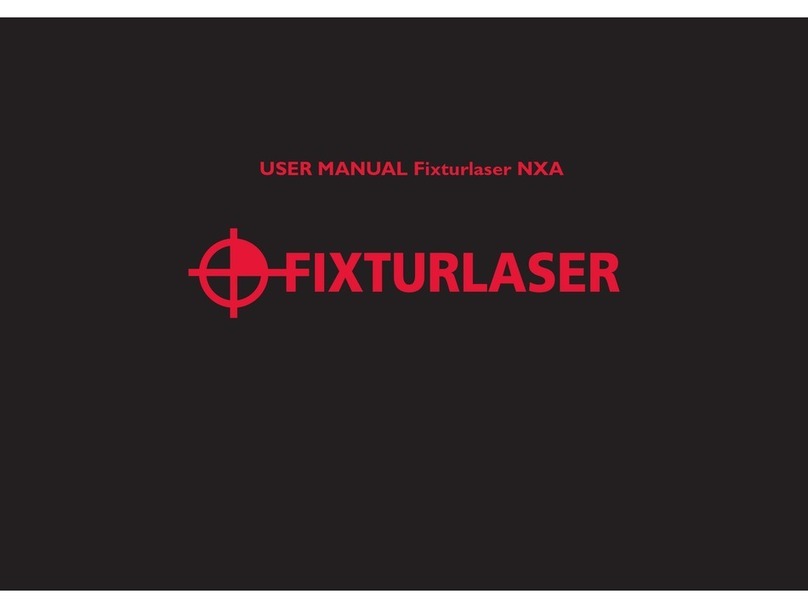
Technical data
Technicaldata
Description L6R L6G
Beam direction/fan angle 2 x Vertical 360°, 1 x Horizontal 360°
Intersection point direction Up, down, right, left, front, back (90°/180°)
Range/Diameter* 25 m/50 m (82 ft/164 ft) 35 m/70 m (115 ft/230 ft)
Range/Diameter* with receiver 70 m/140 m (230 ft/460 ft)**
Levelling accuracy ±0.2 mm/m = ±2.0 mm @ 10m (±0.002 in/ft = ±0.08 in @ 33ft)
Horizontal/Vertical line accuracy ±0.3 mm/m (±0.004 in/ft)
Intersection Point accuracy ±0.2 mm/m (±0.002 in/ft)
Self-levelling range ± 4°
Self-levelling time < 3 s
Out-of-level warning Yes - blink lines every 5 s
Levelling system Automatic, pendulum lockable
Laser type 630 - 645 nm, Class 2 (acc. IEC 60825-1) 510 - 530 nm, Class 2 (acc. IEC 60825-1)
Protection class IP 54 (IEC 60529) dust and splash water
Shock-resistant 1 m (3.3 ft)***
Battery type Lino Li-Ion battery pack 5200 mAh / 18.7 Wh (3 alkaline AA)
Operating time with Li-Ion battery**** Up to 36h (3 beam) continuous Up to 11h (3 beam) continuous
Operating time with alkaline batteries**** Up to 25h (3 beam) continuous Up to 8h (3 beam) continuous
Automatic shut-off Available
Dimensions (L x W x H) 124 x 107 x 154 mm (4.88 x 4.21 x 6.06 in)
Weight with Li-Ion battery 781 g (1.71 lbs)
Operating temperature -10…+50 °C (+14…+122 °F)
Storage temperature -25…+70 °C (-13…+158 °F)
Laser line width at 5m (16.4 ft) distance < 2 mm (<0.08 in)
Tripod thread 1/4’’ (+ 5/8’’ with adapter)
Pulse power for receiver Yes, auto
* depending on lighting conditions
** with Leica RGR 200 receiver
*** accuracy > ± 0.2mm/m (> ± 0.002in/ft), check required
**** @20 °C /68 °F
Leica Lino L6R/L6G 4

